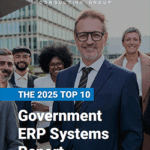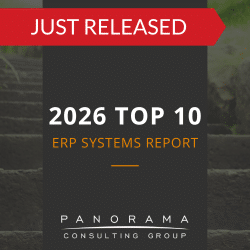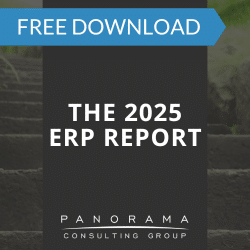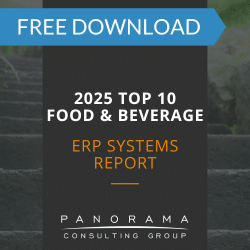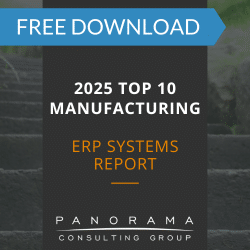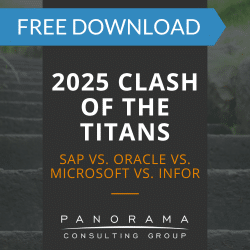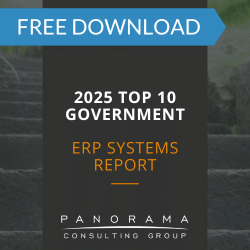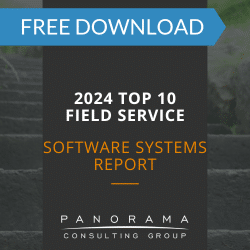- Generational learning preferences in business influence how users engage with ERP training.
- ERP digital literacy varies across generations, often creating adoption gaps that impact performance after go-live.
- A multigenerational ERP training strategy helps organizations support employees with different levels of ERP familiarity and learning preferences.
- Training a multigenerational workforce requires using varied formats, continuous reinforcement, and peer input to support long-term ERP adoption.
For almost a decade, five generations have been active in the workforce. From Baby Boomers, who once relied on paper-based workflows, all the way to Gen Z professionals, raised on smartphones and streaming services, each generation is shaped by a distinct set of historical events, technologies, and learning expectations.
This convergence creates an often frustrating dynamic in digital transformation initiatives. In particular, many companies struggle to build ERP digital literacy among their multigenerational workforce. Any overlooked generation can become an ERP system bottleneck, whether it’s senior employees hesitating to abandon long-used spreadsheets or newer hires skipping key steps.
Without the right training strategy, your project may suffer from low ERP adoption across generations, which can slow down transformation and erode ROI. That’s why a thoughtful approach to multigenerational ERP training is an executive imperative.
ERP Training Plan Success Story
We helped this manufacturer implement an ERP training strategy to increase user adoption of its new ERP system.
Expert Tips for Training a Multigenerational Workforce
During an ERP implementation, one of the most underestimated success factors is a training strategy that accommodates generational learning preferences.
While a Boomer might expect a formal classroom-style workshop with step-by-step manuals, a Gen Xer may want process-focused documentation and video replays. Meanwhile, Millennials might prefer flexible eLearning they can complete at their own pace, and Gen Z is likely to seek short-form videos, gamification, and real-time chats.
Here are four ways to align your ERP training strategy with multigenerational expectations:
1. Segment Training by User Role and Learning Style
Within each department, you’ll find a variety of generationally-influenced learning needs:
- A supply chain manager in their late fifties who spent the bulk of their career working in AS400 green screens and Excel macros (expects a printed reference binder, a two-hour instructor-led workshop, and annotated screenshots they can mark up by hand)
- A procurement analyst in their twenties who learned data visualization via YouTube and has always organized their workflow via Slack (expects concise video demos under five minutes, embedded tooltips, and interactive sandboxes where they can experiment)
This is where you need to think in both vertical and horizontal terms. Role-based training is essential, but layering in content that reflects generational learning preferences will improve information retention.
For instance, you could offer multiple formats for the same training module: one version as a detailed PDF, another as an on-demand video, and a third as a short, mobile-friendly microlearning course. Then, let users choose their preferred format within a defined training path.
2. Use Digital Literacy Assessments to Prioritize Support
ERP digital literacy is often uneven across generational lines. While younger employees may feel comfortable navigating modern interfaces, older employees have had less exposure to role-based dashboards and self-service reporting tools. (That said, younger workers can also struggle, especially when workflows are complex or counterintuitive.)
Our enterprise software consultants often tell clients to start with a lightweight digital readiness survey. This allows you to gauge how confident users are with core ERP functions, like navigation, data entry, reporting, and workflow routing.
Then, you can use this data to personalize learning paths, assign peer mentors, and provide additional onboarding support.
For example, a food and beverage company might assign hands-on trainers to production planning teams who report limited exposure to real-time inventory management in manufacturing ERP systems.
This approach minimizes resistance by meeting each group at their current level of digital fluency. In turn, your project team avoids the hidden costs of rework, retraining, and morale erosion that often accompany the one-size-fits-all training model provided by ERP vendors.
3. Avoid “Train-the-Trainer” Fatigue
The train-the-trainer model remains a staple in ERP rollouts—but its effectiveness has limits. When trainers aren’t equipped to tailor their delivery for different learning styles, the program suffers.
If you’re going to use this model, select trainers who represent different generations and communication styles. Then, coach them on how to adjust their delivery, format, and pacing.
Adjustments might include:
- Offering optional recordings and replay links for employees who’d rather review on their own schedule than sit through a long group session
- Replacing jargon-heavy slides with plain-language examples that tie system tasks to real work, like submitting a PO or reconciling a vendor invoice
4. Use Learning Loops Instead of “One-and-Done” Sessions
ERP learning should be a continuous process of exposure, application, feedback, and reinforcement. Yet too many training programs still follow a linear “attend the workshop, pass the quiz, move on” model.
Our ERP system consultants often recommend designing training as a loop: Start with basic exposure, follow up with real-world application exercises, then layer in feedback mechanisms, like user forums and office hours.
Make these loops generationally inclusive.
For instance, you can offer Boomers and Gen Xers more documentation and Q&A sessions, while giving Millennials and Gen Z opportunities to learn via video walk-throughs and collaborative digital workspaces.
Then, bring all groups back together in recurring process clinics where users share what worked, raise common roadblocks, and revisit key steps based on real system usage. This reinforces learning through repetition, cross-generational discussion, and continuous feedback.
Learn More About Training a Multigenerational Workforce
ERP transformation changes how people work, make decisions, and interact across departments. If your strategy focuses on systems and configurations—without addressing how people of different generations learn—you’re leaving the most unpredictable variable unmanaged.
Contact our organizational change management consultants to learn how multigenerational training could fit into your change management plan.


